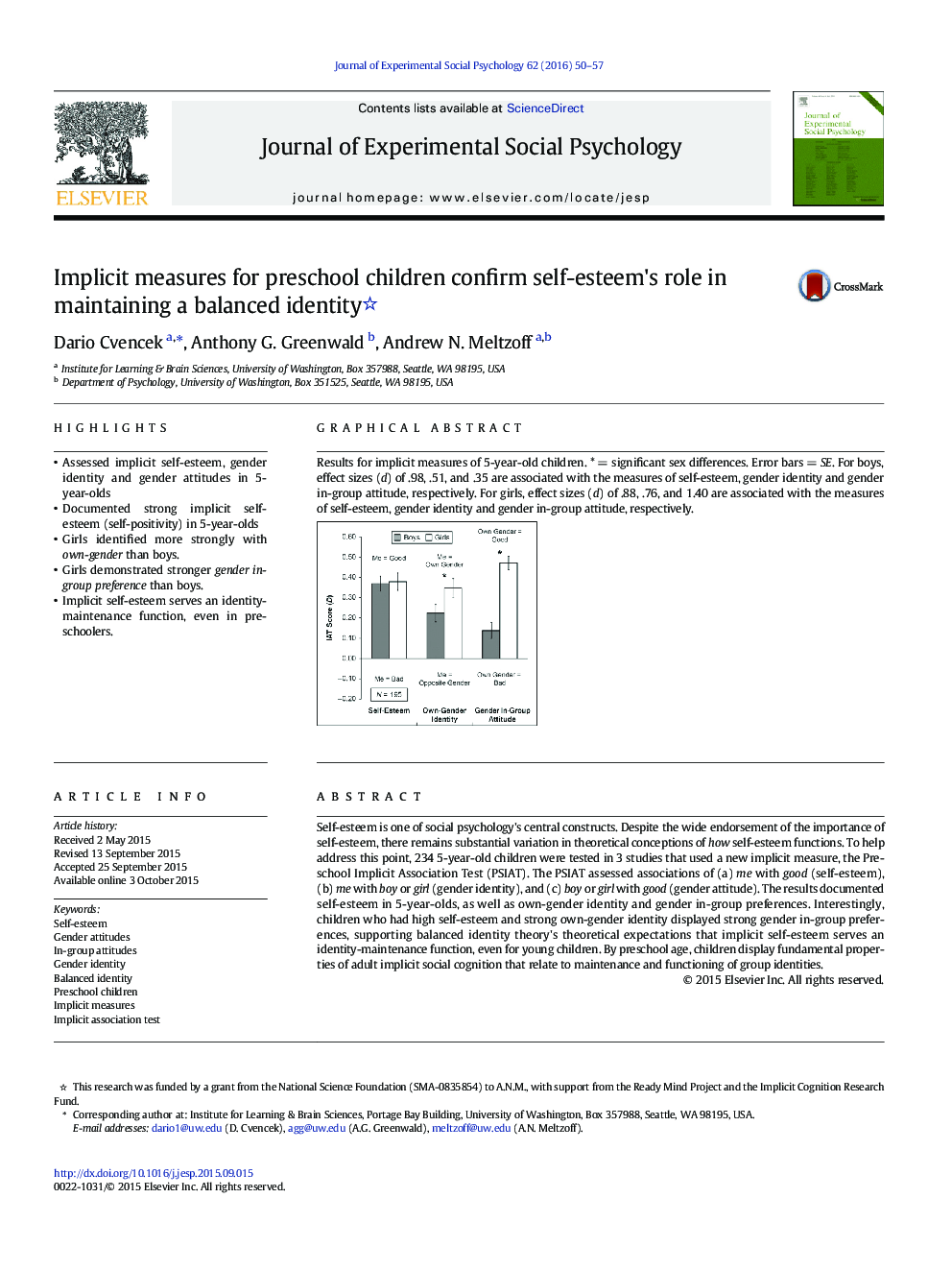| Article ID | Journal | Published Year | Pages | File Type |
|---|---|---|---|---|
| 947680 | Journal of Experimental Social Psychology | 2016 | 8 Pages |
•Assessed implicit self-esteem, gender identity and gender attitudes in 5-year-olds•Documented strong implicit self-esteem (self-positivity) in 5-year-olds•Girls identified more strongly with own-gender than boys.•Girls demonstrated stronger gender in-group preference than boys.•Implicit self-esteem serves an identity-maintenance function, even in preschoolers.
Self-esteem is one of social psychology's central constructs. Despite the wide endorsement of the importance of self-esteem, there remains substantial variation in theoretical conceptions of how self-esteem functions. To help address this point, 234 5-year-old children were tested in 3 studies that used a new implicit measure, the Preschool Implicit Association Test (PSIAT). The PSIAT assessed associations of (a) me with good (self-esteem), (b) me with boy or girl (gender identity), and (c) boy or girl with good (gender attitude). The results documented self-esteem in 5-year-olds, as well as own-gender identity and gender in-group preferences. Interestingly, children who had high self-esteem and strong own-gender identity displayed strong gender in-group preferences, supporting balanced identity theory's theoretical expectations that implicit self-esteem serves an identity-maintenance function, even for young children. By preschool age, children display fundamental properties of adult implicit social cognition that relate to maintenance and functioning of group identities.
Graphical abstractResults for implicit measures of 5-year-old children. * = significant sex differences. Error bars = SE. For boys, effect sizes (d) of .98, .51, and .35 are associated with the measures of self-esteem, gender identity and gender in-group attitude, respectively. For girls, effect sizes (d) of .88, .76, and 1.40 are associated with the measures of self-esteem, gender identity and gender in-group attitude, respectively.Figure optionsDownload full-size imageDownload as PowerPoint slide
